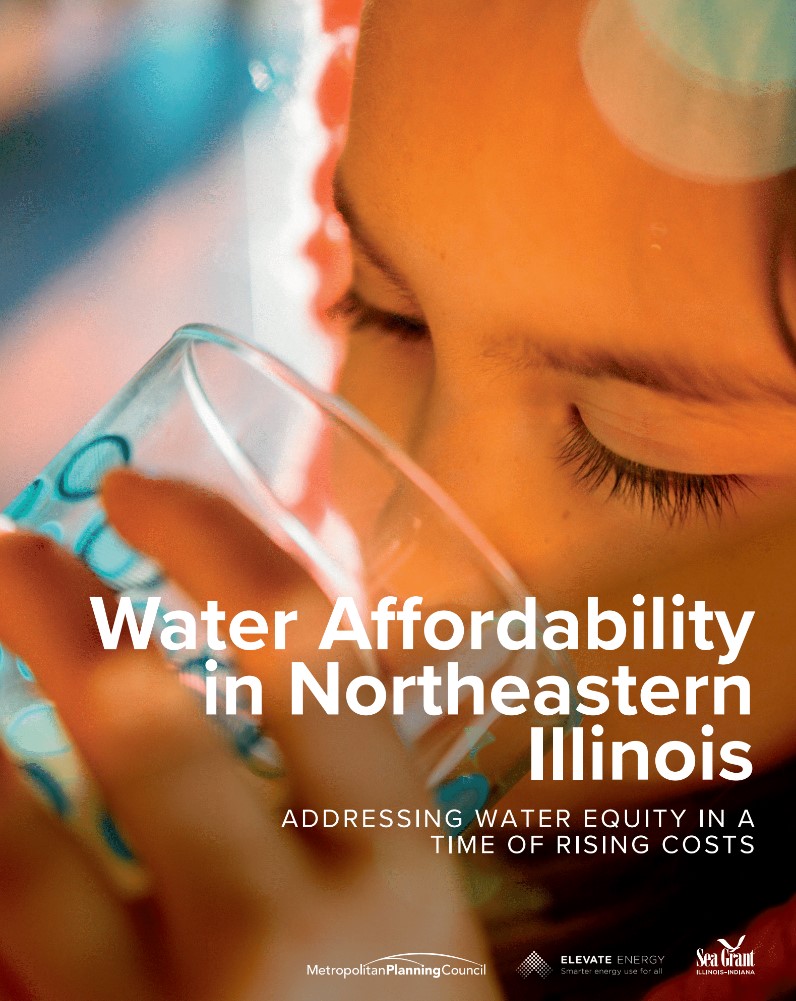Water Affordability in Northeastern Illinois: Addressing Water Equity in a Time of Rising Costs

Across the country, drinking water is getting more expensive. Aging infrastructure, resource scarcity, pollution, population change, and a host of other factors all contribute to escalating water rates. From 2010 to 2019, the price of water service increased by over 57% in 30 major U.S. cities. At the same time, household income has been essentially stagnant, particularly for working class wages, and a growing number of households will find their water bills unaffordable as water rates continue to rise.
Water Burden Defined: The percentage of a household’s income that goes toward paying water bills.
Water affordability is a nuanced issue. Solutions start with identifying who is burdened, and why—whether for lack of income, or for expensive service. That’s why the Metropolitan Planning Council collaborated with Elevate Energy and the Illinois Indiana Sea Grant to better understand the extent of water burden in northeastern Illinois. While more research and work are needed to understand household-level trends, the following resources our agency partnership produced, represents an important first step in quantifying the extent of the problem in northeastern Illinois, and begins to explore strategies for tackling the growing affordability challenge.